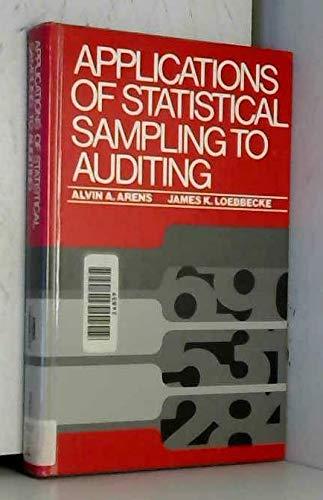Roger Goodman, CPA, is doing a test of the cost of inventory of Spiller Spring Manufacturing Company.
Question:
Roger Goodman, CPA, is doing a test of the cost of inventory of Spiller Spring Manufacturing Company. The decision is made to use both ratio and difference estimation to determine whether the raw-materials inventory is materially misstated. Roger decides that a population error of \($25,000\) or more would be a material misstatement of raw-materials inventory. Beta risk is set at 5%.
A random sample of 100 inventory items is selected and audited for the correct inventory cost as defined by company policy. The ratio estimation confidence interval for the raw materials errors was \($13,000\) ± \($14,000\) at a 5% Beta risk. The difference estimation confidence interval, based upon the same sample results, was \($11,000\) ± \($13,000\) at the same Beta risk.
Required :
a. Is it acceptable to use both ratio and difference estimation for one audit situation? Explain.
b. Explain the cause, to the extent possible from the information provided, for the difference in the confidence intervals for the two statistical methods.
c. Show graphically, using the appropriate decision rule, that a different decision is made about the acceptability of the population according to which statistical method is used.
d. Given the results in
e. What is the appropriate course of action for the auditor to follow ?
Step by Step Answer:

Applications Of Statistical Sampling To Auditing
ISBN: 9780130391568
1st Edition
Authors: Alvin A. Arens, James K. Loebbecke





